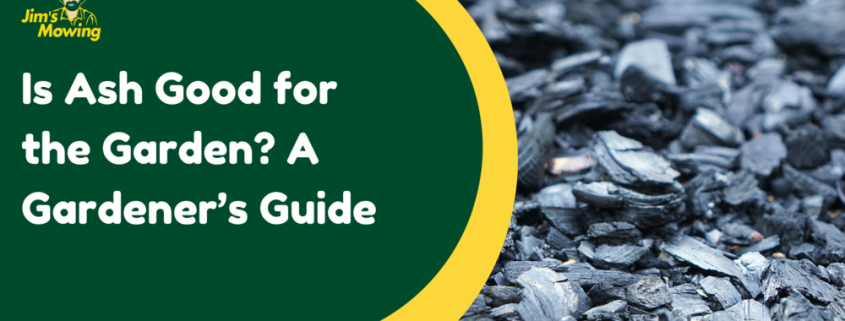Is Ash Good for the Garden? A Gardener’s Guide
Is ash good for the garden? Wood ash has long been used as a natural soil amendment, but many gardeners still wonder if it truly benefits their plants. In New Zealand, where gardening is a beloved pastime, knowing how to use ash properly can make the difference between thriving plants and damaged soil.
In This Blog You’ll Learn:
- The benefits of using ash in your garden
- What nutrients ash provides
- The risks and limitations of ash use
- Best practices for applying ash safely
- Alternatives and complements to wood ash
- Common questions about ash in New Zealand gardens
The Benefits of Using Ash in the Garden

1. A Natural Source of Nutrients
Wood ash contains essential nutrients that plants need to grow. The most prominent is potassium (often referred to as potash), which supports strong root systems, flower development, and overall plant health. Ash also provides calcium, magnesium, and trace minerals that enrich the soil.
These nutrients are particularly valuable in New Zealand soils, where heavy rainfall in some regions can leach minerals away. Adding ash helps restore balance, ensuring plants receive the nourishment they require.
2. Raising Soil pH (Reducing Acidity)
New Zealand soils are often on the acidic side, especially in areas with high rainfall such as the West Coast or Northland. Acidic soils can limit nutrient availability to plants. Wood ash acts like lime, raising soil pH and creating a more neutral growing environment.
For crops that dislike acidic conditions—such as beans, peas, cabbages, and brassicas—wood ash can improve yields significantly. However, it’s important not to over-apply, as too much ash can swing the soil pH too far in the alkaline direction. Unsure about your garden’s soil PH, professional gardening services often include checking your soil PH level to give the best treatment.
3. Improving Compost Quality
Adding small amounts of ash to compost can speed up decomposition and enrich the finished compost with minerals. It helps balance acidic green materials like kitchen scraps and grass clippings, creating a more stable compost pile.
The key is moderation. Too much ash in compost can smother beneficial microbes and slow the process down. A handful sprinkled on every layer of compost materials is more than enough.
The Potential Risks of Using Ash

1. Over-Alkalinising the Soil
One of the biggest risks of using ash is making the soil too alkaline. While a slight pH increase can help in acidic areas, going overboard can lock up essential nutrients such as iron and phosphorus. Plants like blueberries, rhododendrons, azaleas, and camellias, which thrive in acidic soils, can suffer in alkaline conditions.
Before adding large amounts of ash, it’s wise to test your soil pH. Home testing kits are widely available in New Zealand garden centres and provide reliable guidance on whether your soil needs ash at all.
2. Salt Content in Ash
Wood ash contains small amounts of salt, which in high concentrations can harm plants by interfering with water uptake. This is especially risky if ash is applied directly around seedlings or sensitive plants. To avoid problems, always spread ash evenly and mix it well into the soil rather than leaving it in piles.
3. Avoiding Contaminated Ash
Not all ash is suitable for the garden. Ash from treated wood, painted timber, or coal should never be used, as it may contain harmful chemicals that contaminate soil and damage plants. Only ash from untreated, natural wood is safe for use in gardens.
Best Practices for Using Ash in New Zealand Gardens
1. Apply in Moderation
A light scattering is usually sufficient. For most gardens, 70–100 grams per square metre per year (roughly a handful) is enough. Applying more won’t necessarily increase benefits and may cause harm.
2. Choose the Right Timing
The best time to apply wood ash is during winter or early spring, when soil is moist but not waterlogged. This gives nutrients time to integrate before planting begins. Avoid applying ash on windy days, as it can easily blow away.
3. Mix, Don’t Dump
Instead of leaving ash on the soil surface, lightly rake it into the top few centimetres of soil. This helps prevent nutrient loss from rain runoff and reduces the risk of alkaline hotspots.
4. Use Ash Selectively
Not all plants benefit from ash. Use it around vegetable crops like cabbages, broccoli, onions, beans, and peas. Avoid using ash near acid-loving ornamentals such as camellias, azaleas, hydrangeas, and blueberries.
5. Safe Storage of Ash
If you generate a lot of ash from a fireplace or wood burner, store it in a dry, sealed container. Wet ash can form lye, a caustic substance that may damage skin and soil. Storing it properly ensures you can use it safely over time.
Alternatives and Complements to Ash
While wood ash is useful, it shouldn’t be the sole soil amendment in your garden. Complementing it with organic matter and other natural fertilisers ensures a balanced nutrient profile.
- Compost – Improves soil structure and provides a slow release of nutrients.
- Seaweed – Abundant in New Zealand, it adds trace elements and stimulates plant growth.
- Animal manure – Provides nitrogen and organic matter, helping balance the high potassium content of ash.
- Lime – For gardeners who need to raise soil pH but don’t have access to wood ash, lime is a good alternative.
By combining ash with other organic inputs, you’ll create a healthy, diverse soil ecosystem that supports long-term plant growth.
Common Questions About Ash in the Garden

- Can I use ash on my lawn?
Yes, but sparingly. A light dusting in early spring can help balance acidity, especially in regions with acidic soils. Over-application, however, can harm grass health. - Is ash good for fruit trees?
Moderate amounts of ash can benefit apple, pear, and stone fruit trees by adding potassium and calcium. However, avoid ash around citrus trees, which prefer slightly acidic soils. - Can ash deter pests?
Yes. A thin layer of ash around the base of plants can deter slugs and snails, as the fine particles are abrasive. Just be careful not to overdo it, as concentrated ash may harm young plants. - How often should I add ash to my garden?
Once a year is usually enough. Monitor plant health and soil pH to determine if additional applications are needed.
Conclusion
Wood ash can be an excellent addition to New Zealand gardens when used wisely. It enriches soil, balances acidity, and supports plant growth. For expert guidance on lawn care, gardening services and maintenance, trust Jim’s Mowing NZ. Call us today at 0800 454 654 to keep your garden thriving.


